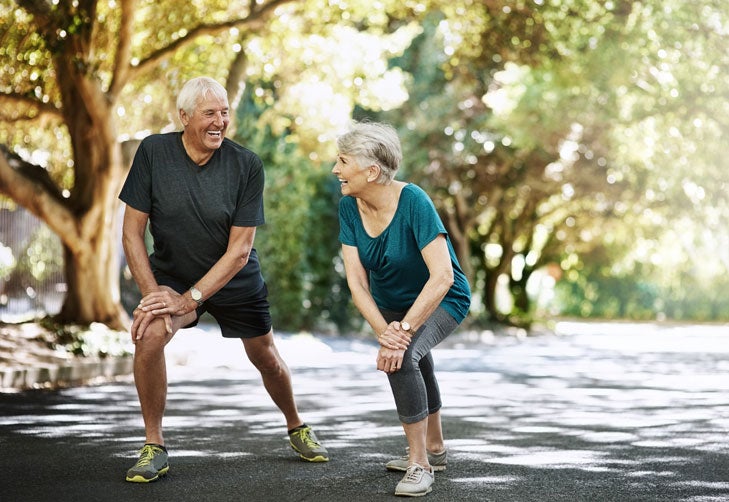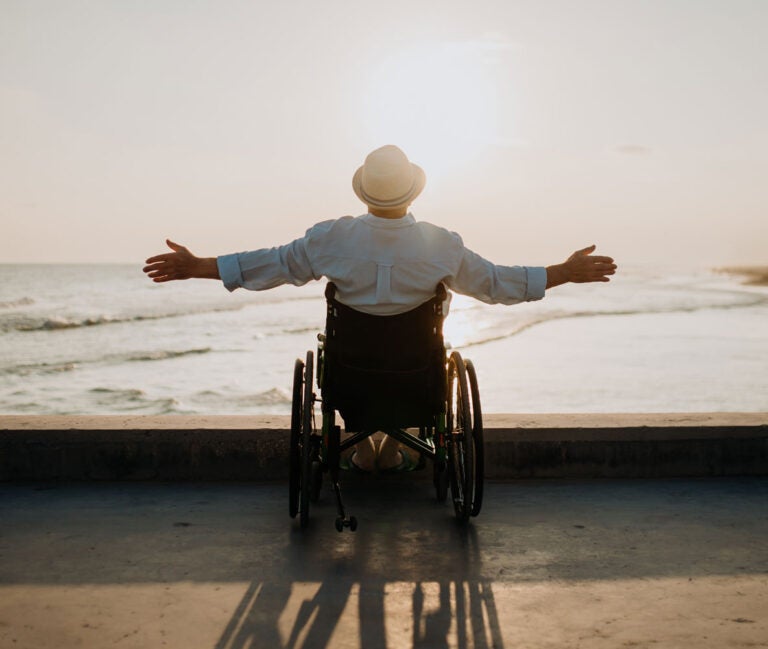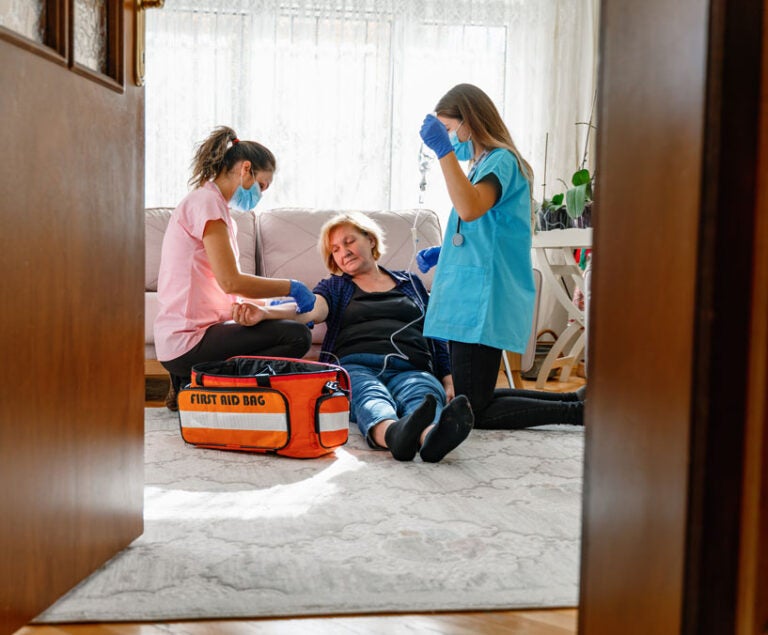As we grow older, exercise is one of the most important things we can do for our health, longevity, and emotional well-being. It helps strengthen our bodies, improves our coordination, lowers cholesterol, reduces inflammation, and reduces the risk of dementia. Best of all, exercise transforms our lives in ways we don’t expect—especially when doing something you love. Luckily, there are plenty of fitness activities for retirees to choose from.
Here are the stories of four retirees who love their chosen form of exercise. They share the benefits they’ve experienced and offer tips for getting started.
Mountain Biking for Fun and Fitness
Engineer Jeff Harrell, 66, of Altadena, Calif., says his best friend is his mountain bike. He rented his first one back in 1988 when he was visiting Catalina Island off the coast of California, and it was a revelation.
“I was riding up this dirt trail, seeing these incredible vistas, and rode right past some sleeping buffalo. I never knew exercise could be this much fun. I thought, ‘Where have you been all my life?'”
For Harrell, riding in the mountains near his home 1-2 times a week is part physical exercise and part emotional therapy. “I have to ride to satisfy my restlessness. On the way up, I process the stuff that’s bugging me. On the way down, I’m into the endorphins, and I’m blissed out and euphoric. I feel very fortunate that I’m able to do this.”
When he’s crunched for time, Harrell takes a couple of laps on the streets around his Altadena neighborhood. He also owns a tandem bike that he rides with his girlfriend. He calls their tandem rides together “aerobic socialism.”
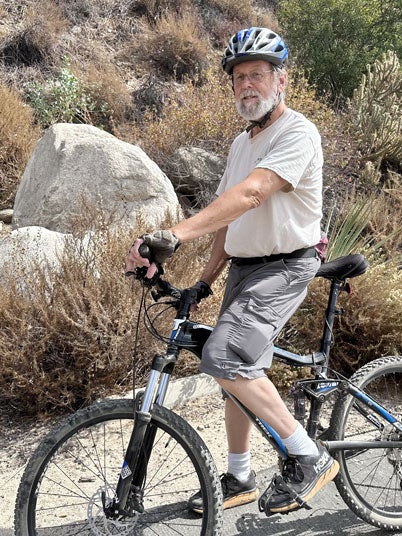
Tips for Getting Started
For people new to biking Harrell recommends renting a mountain bike before investing in your own. Trying out easy local bike trails is a safe way to start. Cross-training with hiking can also help prep your body for more challenging terrain. “Build up your endurance gradually and be sure to stretch after,” Harrell says.
If mountain biking sounds too strenuous, or you’re looking for a softer way to start, spin classes offer a great, low-impact, high-reward alternative. LA Fitness Spin Instructor Edward Welch, 66, says that spin classes offer “a whole lot of bang for your calorie-burning buck.”
Welch guides his spin students, the majority of whom are over 50, through High-Intensity Interval Training (HIIT). That’s alternating 30-40 seconds of pedaling as fast as you can with slower-paced recovery periods. HIIT helps burn fat and build muscle. It’s also a great workout for your heart. “My older students have told me they think spinning is an incredible workout, and they’re amazed at what they can accomplish,” says Welch.
Yoga to Counter Aches and Pains
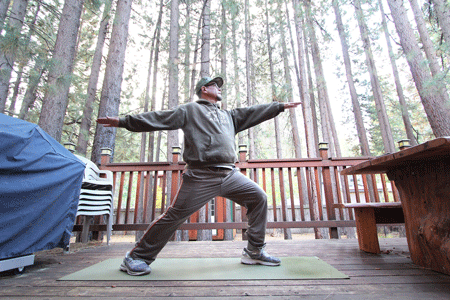
While Joe Bui of Ojai, Calif., was in college studying graphic design, he found that working out eased his loneliness and anxiety. He jogged and ran on trails and along the local beaches—always pushing the limit. Little did he know the damage it was doing to his hips. In his 40’s, he learned he had arthritis.
By his early 50’s, he could barely walk his dog around the block. “There was no cartilage left,” he said. “If I put weight on my right hip, I’d just collapse.” He underwent three hip replacement surgeries—two on the right. Four years later, he had his left hip replaced.
Physical therapy initially helped the retired advertising designer walk again with strengthening and range of motion exercises. But he struggled with simple movements, like bending over to pick up something off the floor. That’s when he turned to yoga to help him with balance and flexibility.
In his first yoga class, Joe felt frustrated that he couldn’t do the advanced poses. “But yoga taught me the importance of stretching, breathing, and listening to what my body was telling me,” he says. “I was always wanting to exceed my last effort. But yoga isn’t like that. Your body dictates everything. I had to learn how to accept what I was able to do at that moment.”
Now 64, Joe does yoga regularly and considers it a bridge back to other forms of exercise. With improved flexibility and balance, he’s been able to add workouts on a recumbent bike. “I appreciate all the mobility I’ve regained, and now I’m just enjoying the world again.”
Getting Started Tips
After experiencing the dangers of pushing too hard firsthand, Bui cautions everyone to “listen to your body. Like my yoga teacher told me, ‘Don’t overdo it and do only what feels right for you.'”
That yoga teacher, personal trainer, and owner of the yoga studio Yoga Jones, Nicole Corridori of Ventura, California, highly recommends yoga to help aging bodies stay limber and mobile. Corridori believes yoga also offers mental benefits. “As our bodies get stiff and rigid, so do our minds. Yoga helps you move very consciously and builds confidence, balance, and stability. It’s also good for breathing and keeping you calm and emotionally balanced,” she says.
Walking as a Low-Impact Alternative to Running
Philip Davidson was an avid runner until he injured his knee in his early sixties. The Medicare marketer turned to yoga to help him recover but found it didn’t give him the same satisfaction as running had. Walking 40-45 minutes six days a week in his Old Greenwich, Conn., neighborhood offers a good, low-impact alternative to running.
“Walking has both physical and emotional benefits that have become necessary and are sometimes profound, said Philip. “It helps dial down the chatter in my mind by being as present as possible with each step. This clears my mind and encourages different thinking, loosens my imagination, and often leads to problem-solving. I have never walked and not benefited from it in some way.”
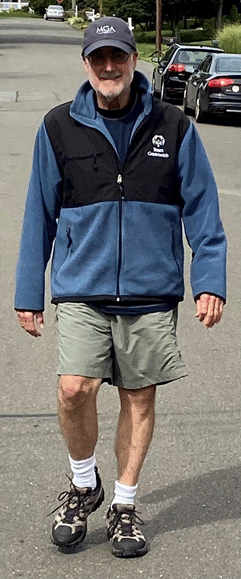
Davidson also touts the cost-effectiveness of walking. “It’s one of the easiest ways to start exercising. You don’t have to join a gym or buy expensive equipment. You need good, comfortable walking shoes,” says Davidson. “My current favorites are Merrell Moabs which are lightweight, waterproof, and durable as hell.”
Getting Started Tips
For anyone looking to walk for fitness, Corridori recommends investing in walking sticks to boost cardio and assist with balance. She also advises working in some hills to add resistance and stretching after each walk while your muscles are warm to improve flexibility.
Running to Lose Weight Brought Unexpected Benefits
Retired high-school teacher, Sara Chialtas of Granada Hills, Calif., fell in love with running 15 years ago when she was 60. At the time, Chialtas, who is 5’2″, weighed 196 pounds and had just been diagnosed with Type 2 diabetes. Her doctor told he if she lost 10 pounds, she wouldn’t have to take medication. Chilatas thought running might help her lose weight.

Without any previous running experience, she found motivation and help getting started through a running group. After training for several months, she participated in her first full marathon. “The last few miles of the marathon, I just walked, but it was a beginning.”
Since that first marathon, Chialtas has run over 35 competitions, including full marathons, half marathons, and 10Ks, and lost 78 pounds along the way. She still runs every weekend with a pack of fast friends she met through her first training group who she calls “The Girls.” “Now I mostly run/walk at least 3 miles, over five times a week. I really like running with the girls for the company because we encourage each other,” she says.
In addition to helping her lose weight, Chialtas says running has affected other parts of her life as well, “[it] has given me a lot more energy, and since I lost the weight, I’m no longer a diabetic.”
Getting Started Tips
Corridori says Chialtas took all the right steps to become a runner. “If you haven’t exercised in a while, do it under the supervision of a trained pro.” She says that an exercise support group like Chialtas also helps you stick with it. “Training with a pro or having a group you like to exercise with keeps you engaged, you’re less likely to blow it off.” Another way to stick to your regime is to make a workout schedule. “Now you’ve got some commitment and skin in the game.”
Regardless of which activity you pursue, there are plenty of fitness activities for retirees. The key is to find something you enjoy and stick with it.
This article is intended for general informational and educational purposes only, and should not be construed as financial or tax advice. For more information about whether a reverse mortgage may be right for you, you should consult an independent financial advisor. For tax advice, please consult a tax professional.

